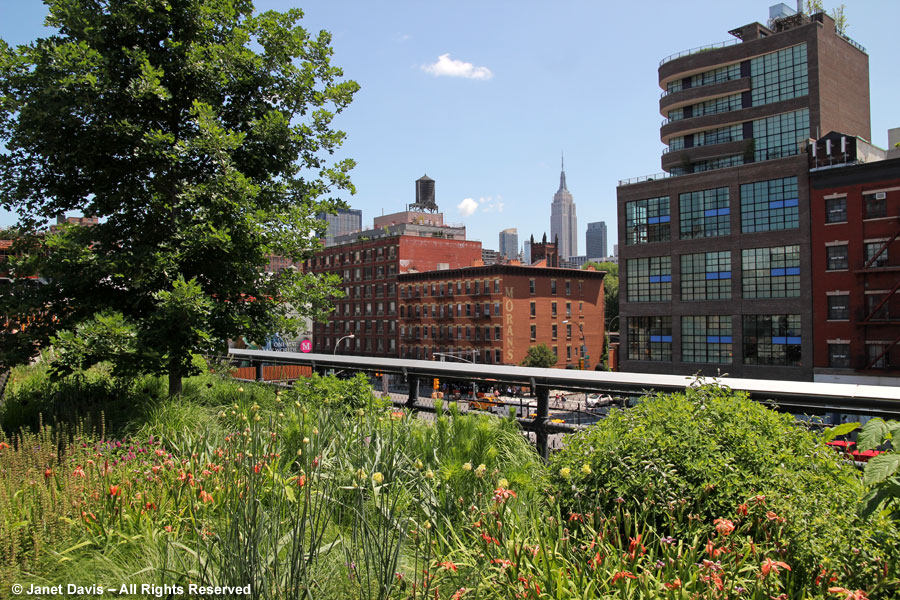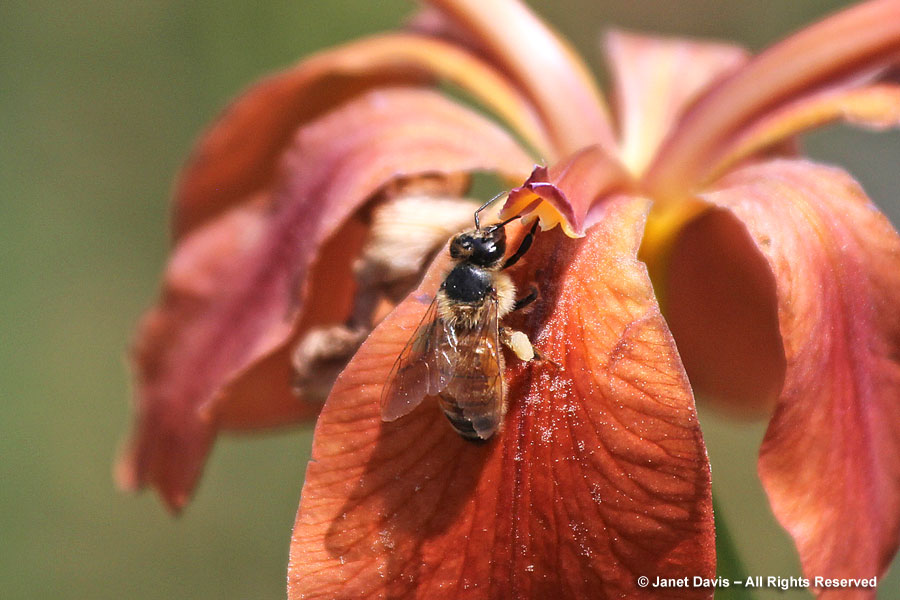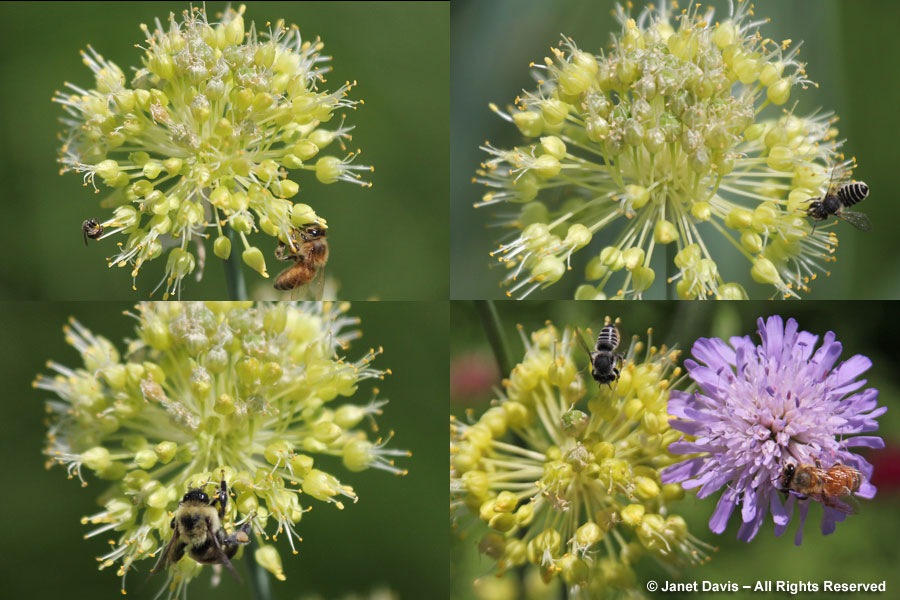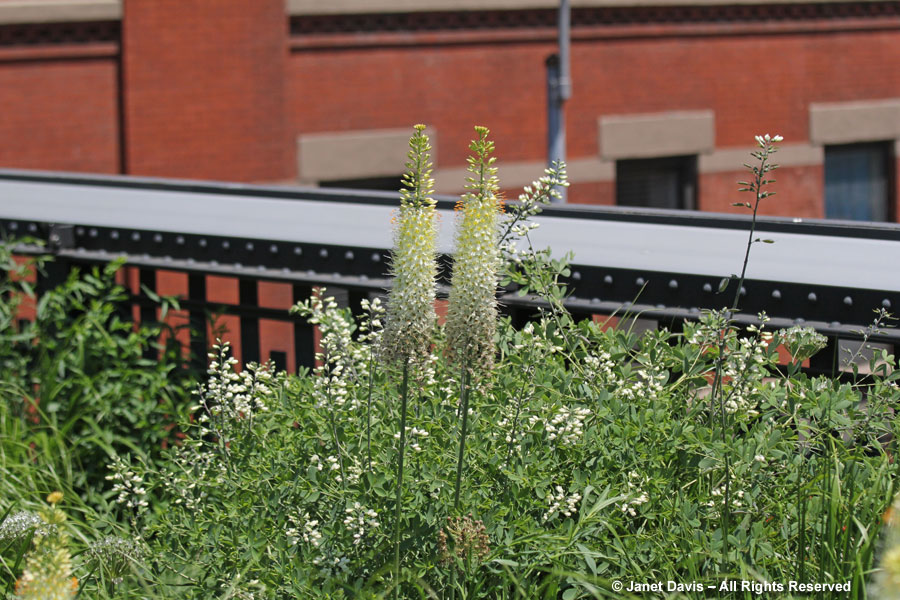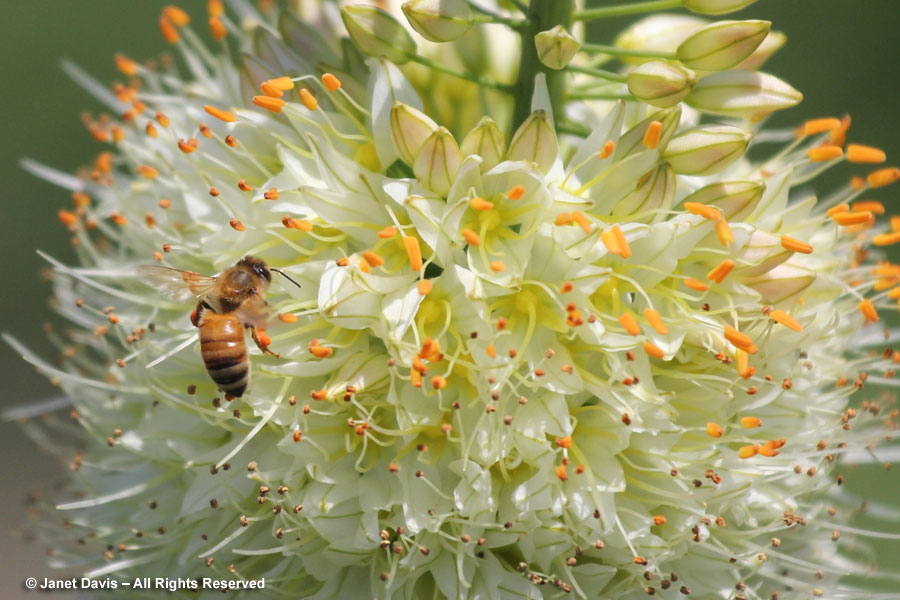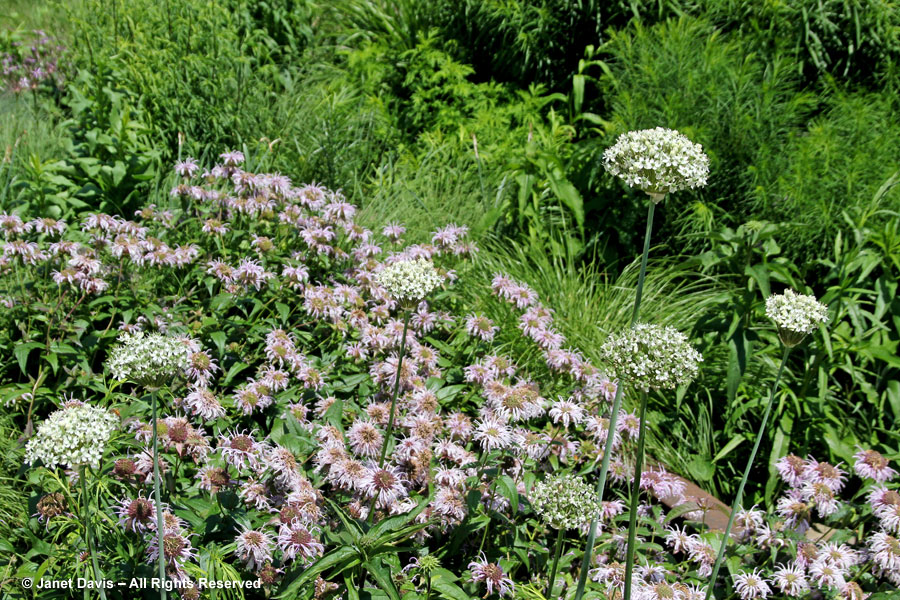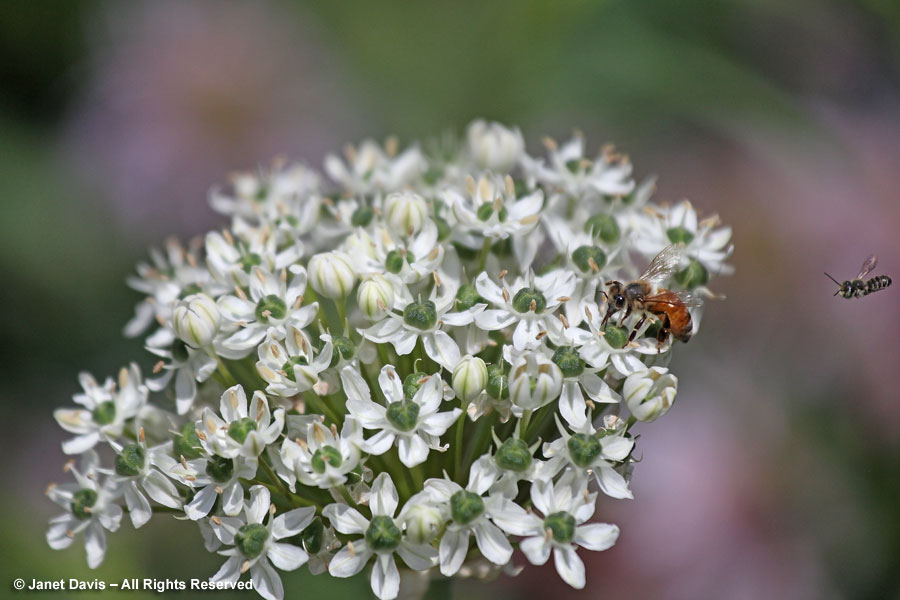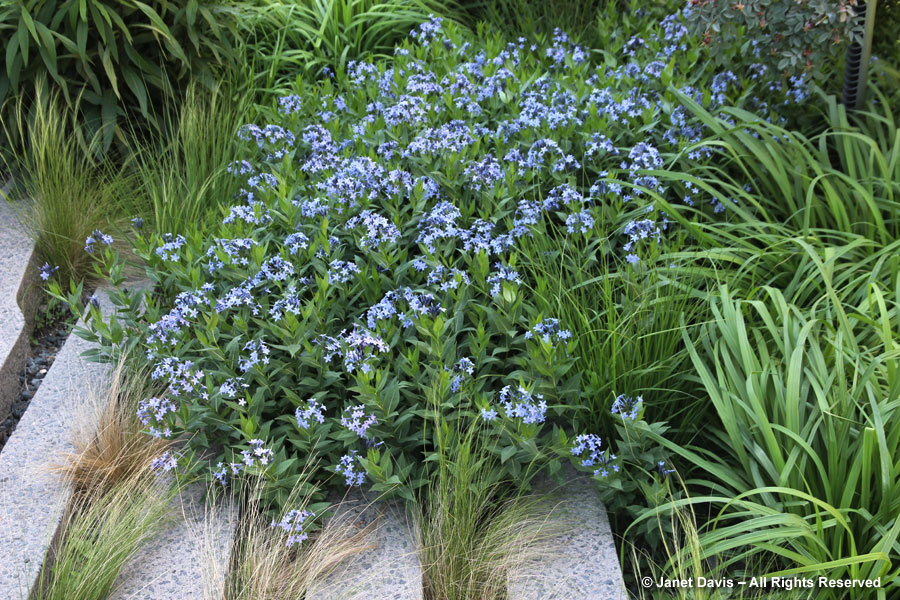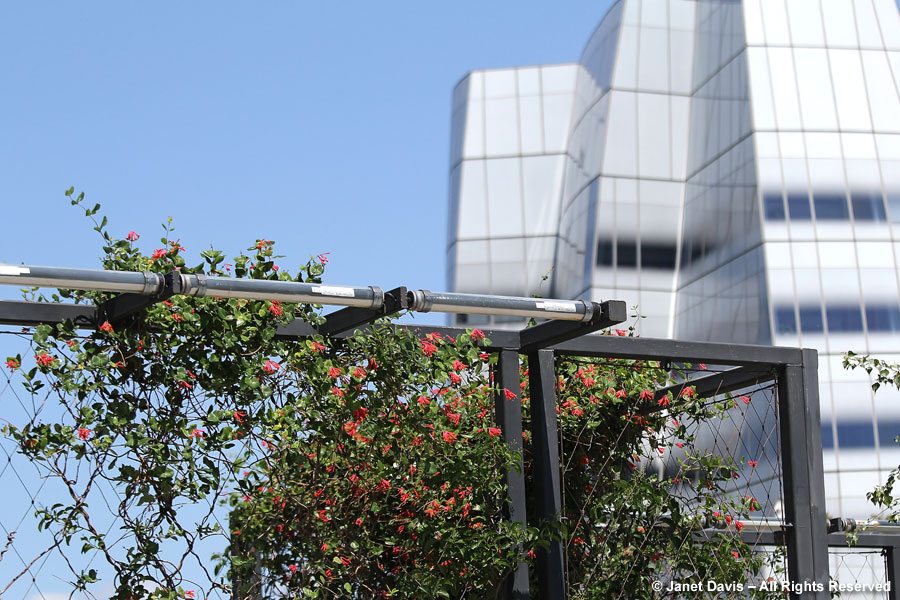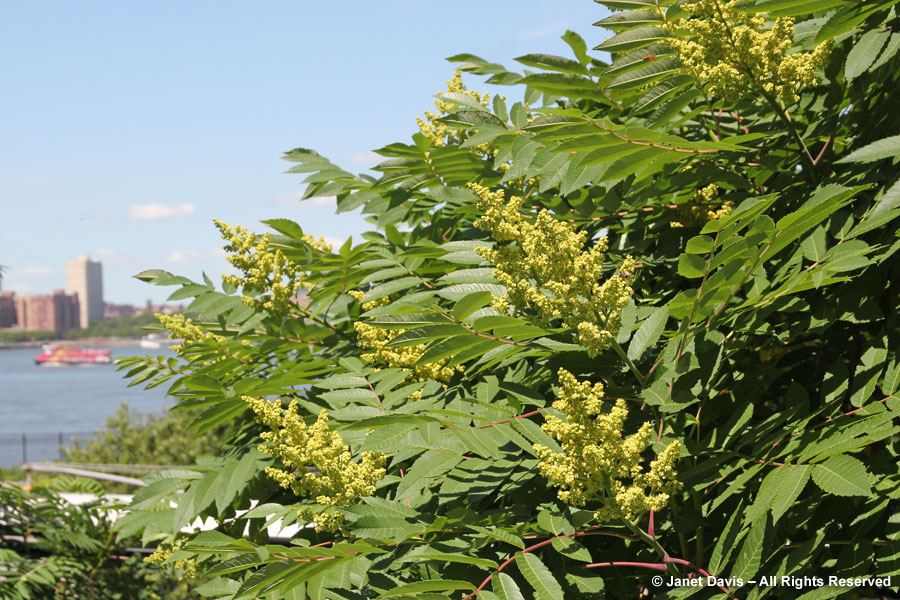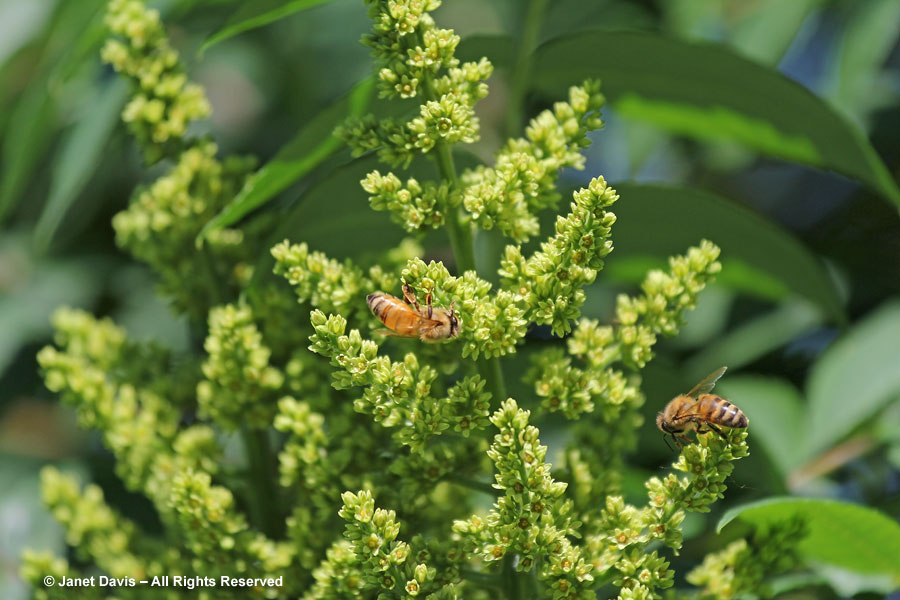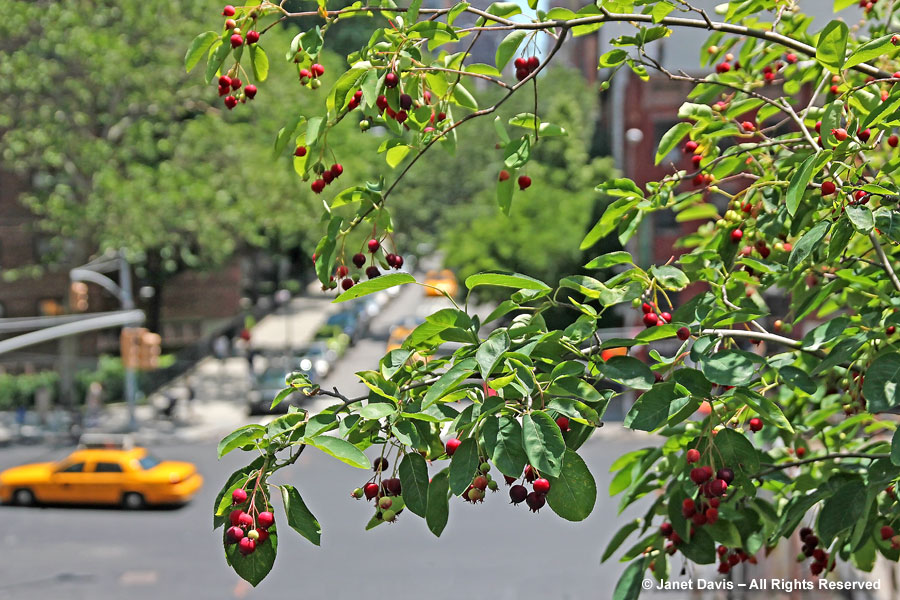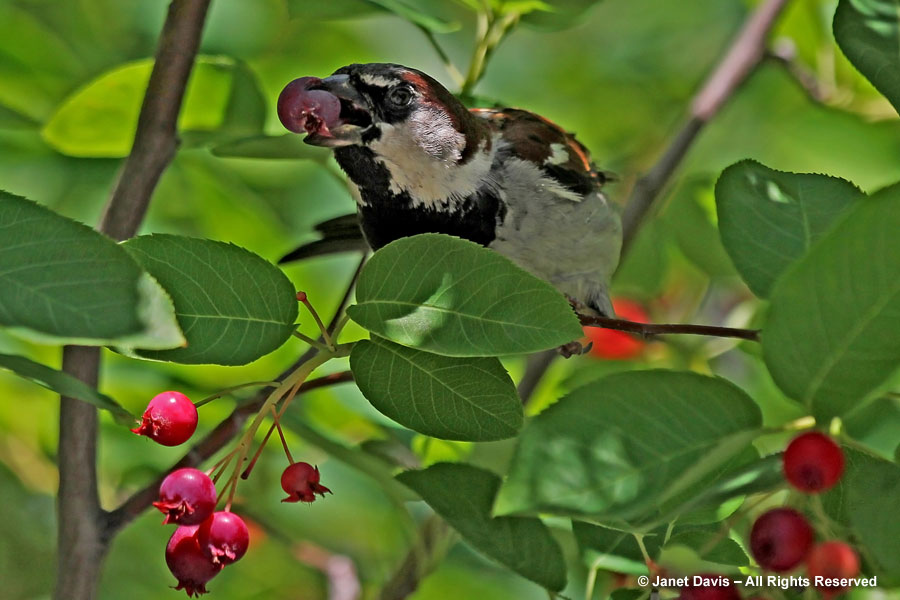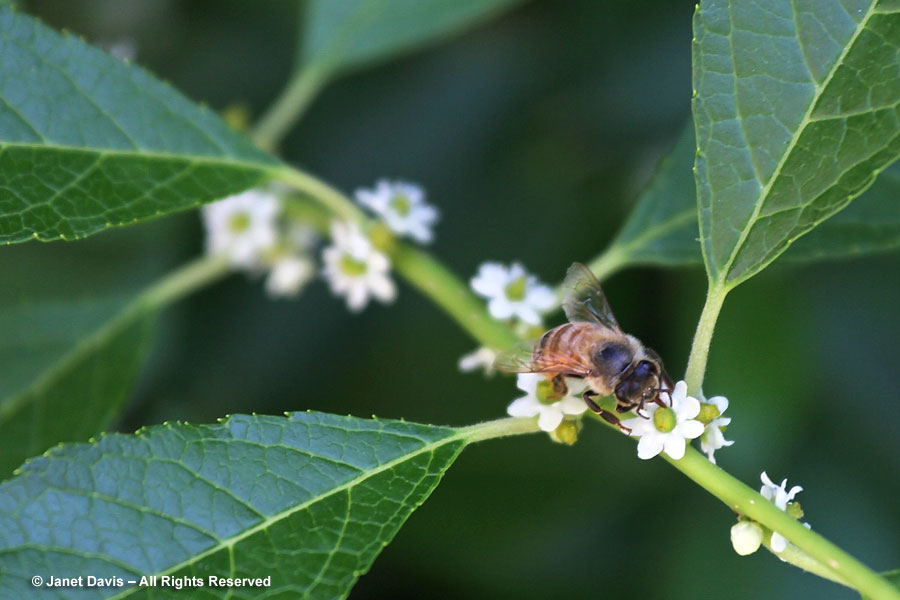My 18th fairy crown for August 7th features a strange, wild creature having a seriously bad hair day. All right…. it just contains a lot of spike flowers and I ran out of horizontal room on the tiara so it looks like I’ve endured a shock. These are flowers and leaves from my Toronto garden. The lavender-blue spikes are Russian sage (formerly Perovskia atriplicifolia, now called Salvia yangii after DNA analysis proved it was in the sage family). The fuzzy dark-mauve spikes are Liatris spicata ‘Kobold’, aka blazing star or gayfeather. The stem with wine-red leaves and flower clusters is Sedum ‘Vera Jameson’. The chartreuse flowers cascading over my forehead are Canada goldenrod (Solidago canadensis) – at least, a few stems that I didn’t tear out to try to prevent it from spreading (which it will do anyway). The dissected leaves come from my Tiger Eye sumac shrub (Rhus typhina ‘Bailtiger’) and the vine falling over my right shoulder is Boston ivy (Parthenocissus tricuspidata). Those little, pale-pink bottlebrush flowers on my left cheek are ‘Pink Tanna’ burnet (Sanguisorba officinalis) at the end of its season. Finally, tucked into a corner on my forehead are a few red flowers of Petunia exserta that I forgot I’d thrown into my sundeck containers and they emerged in the midst of self-seeding oakleaf lettuce.

With its airy wands of long-lasting, light-blue flowers, the sub-shrub Russian sage is a big presence in my pollinator garden…..
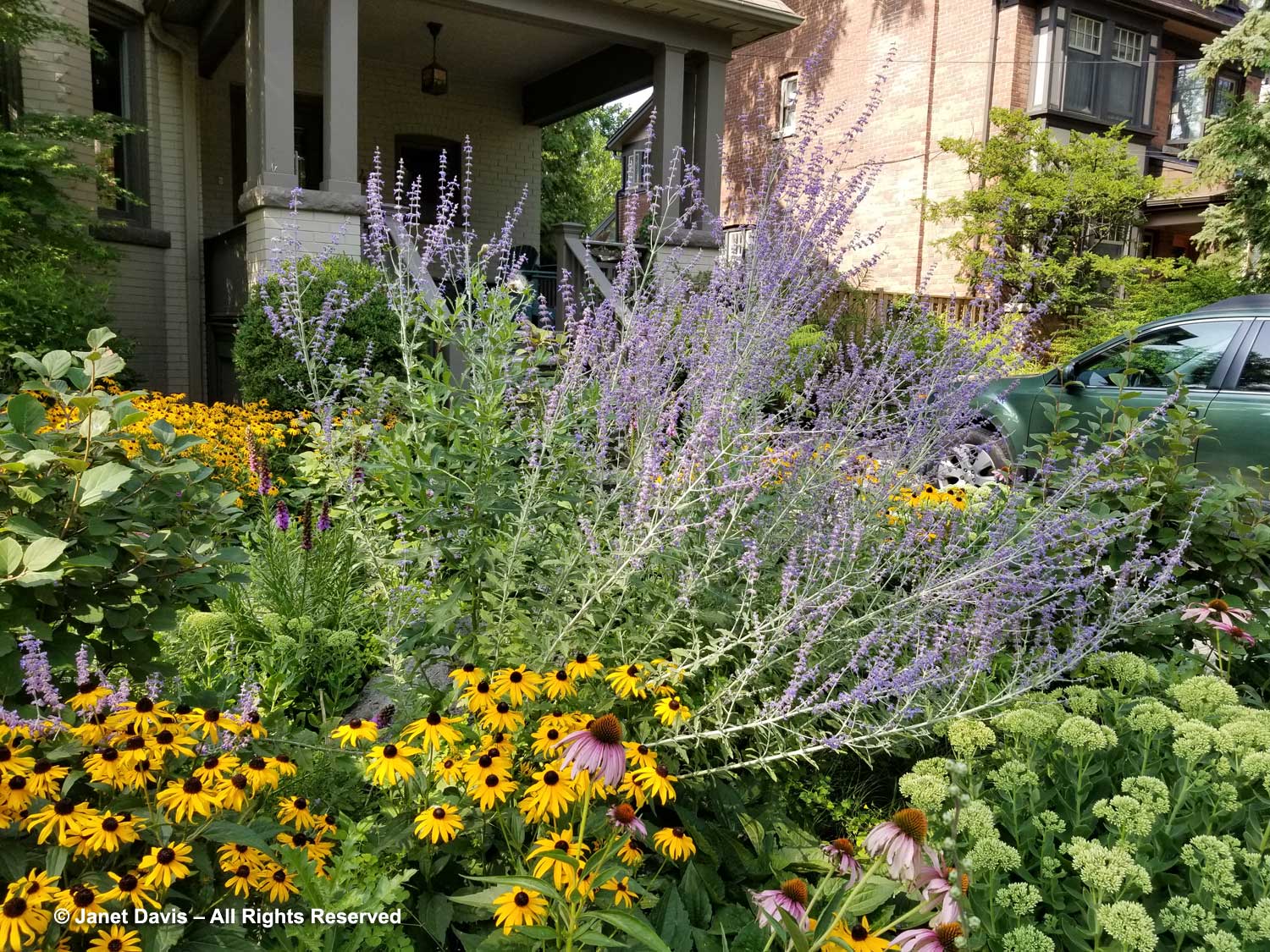
…..and it offers nectar to bees for many weeks.
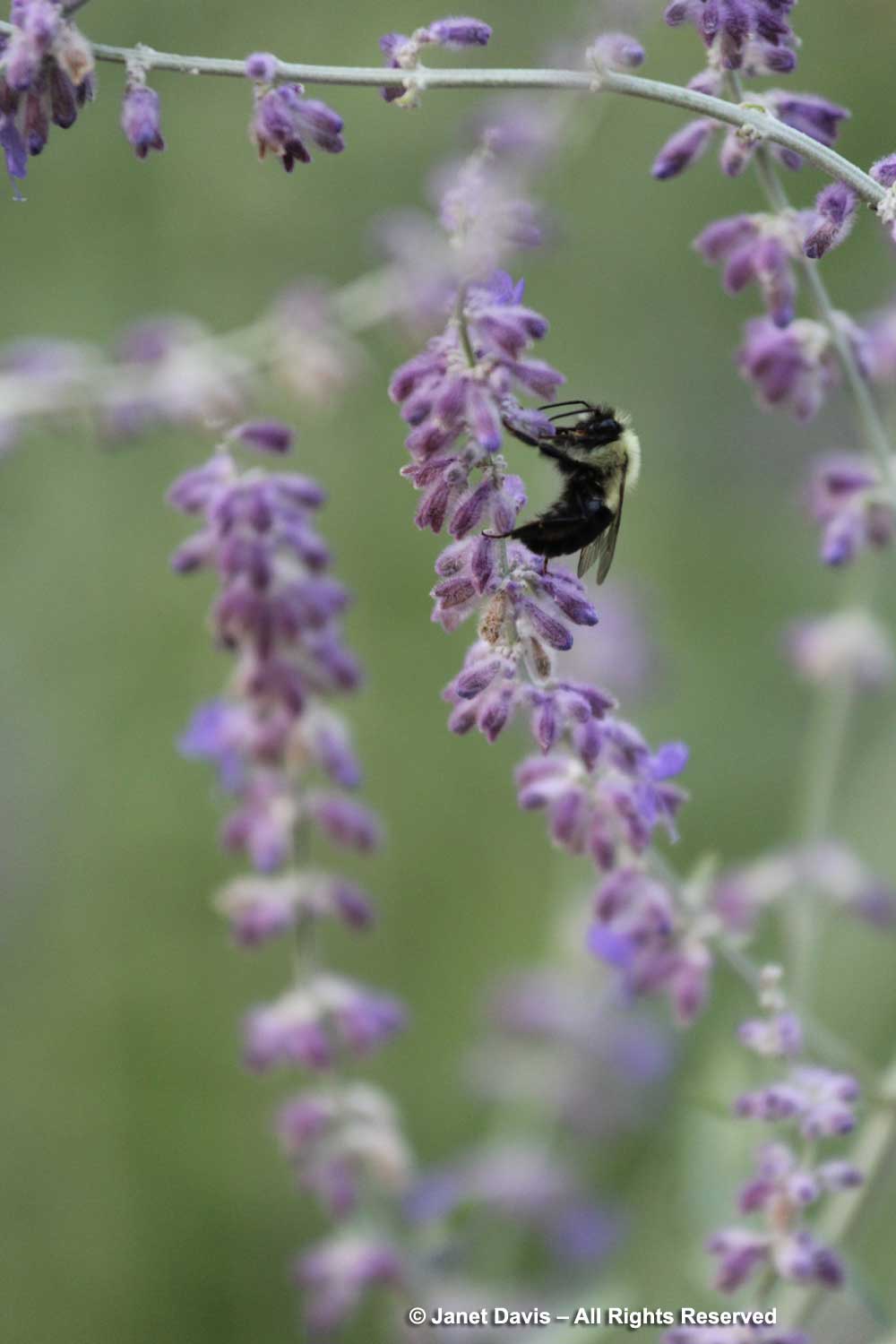
But it is sometimes short-lived and does not take kindly in our cold climate to being cut back in autumn. Much better to wait until spring when new growth has started.
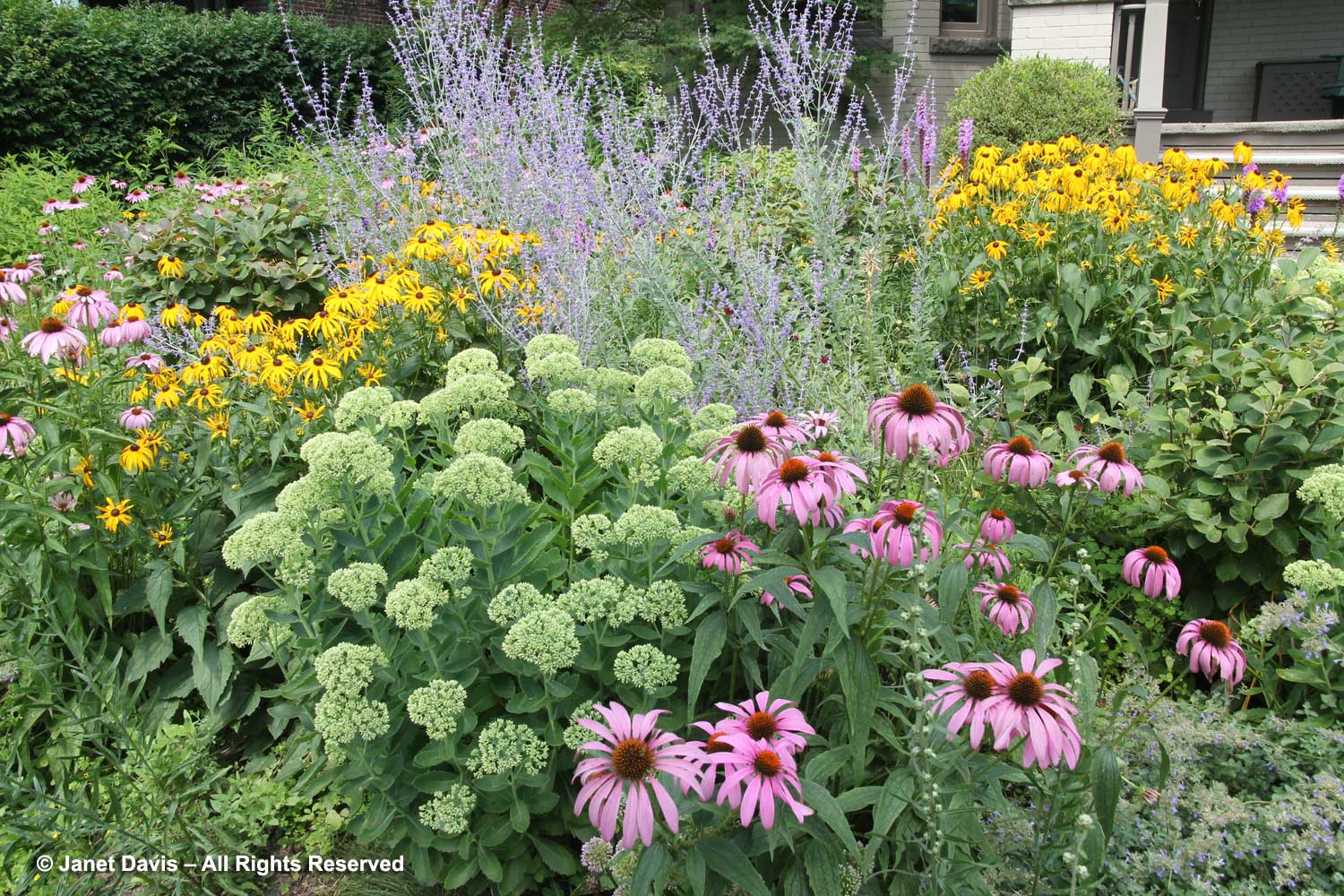
It flowers at the same time as violet-purple dense blazing star (Liatris spicata ‘Kobold’)….
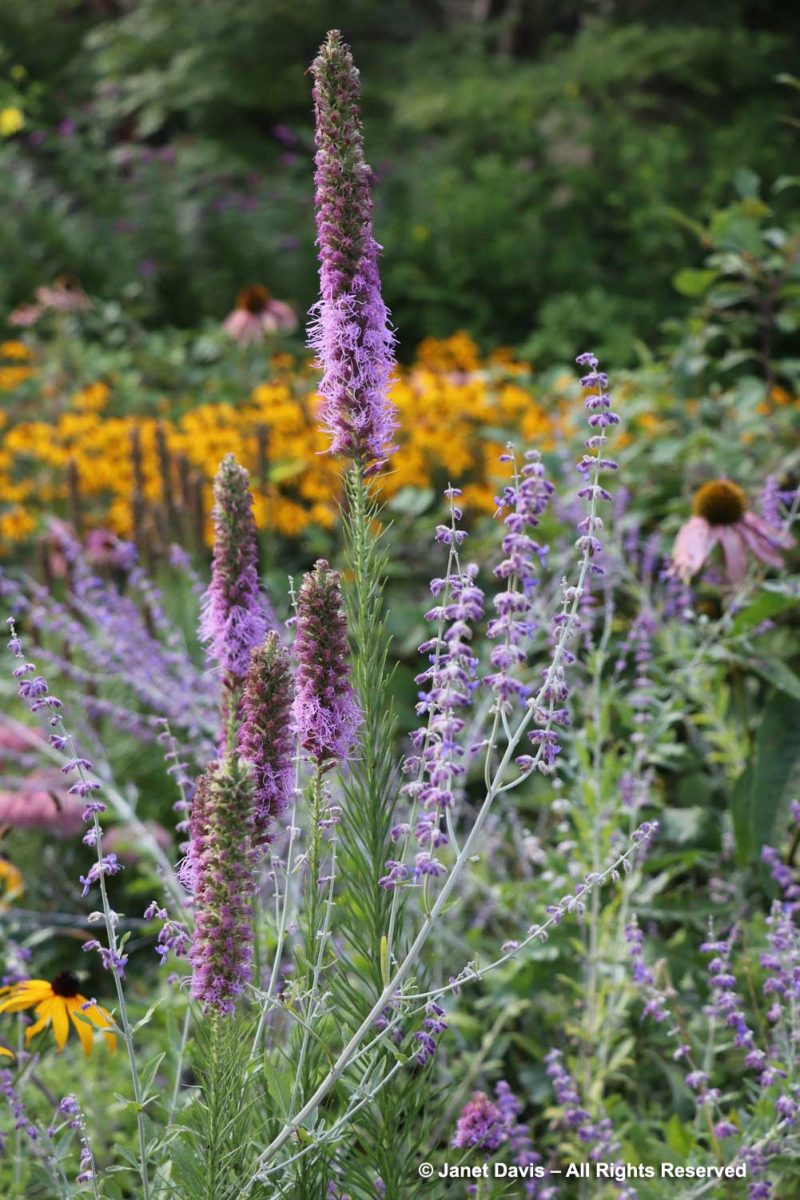
…. which is also a wonderful pollinator lure.
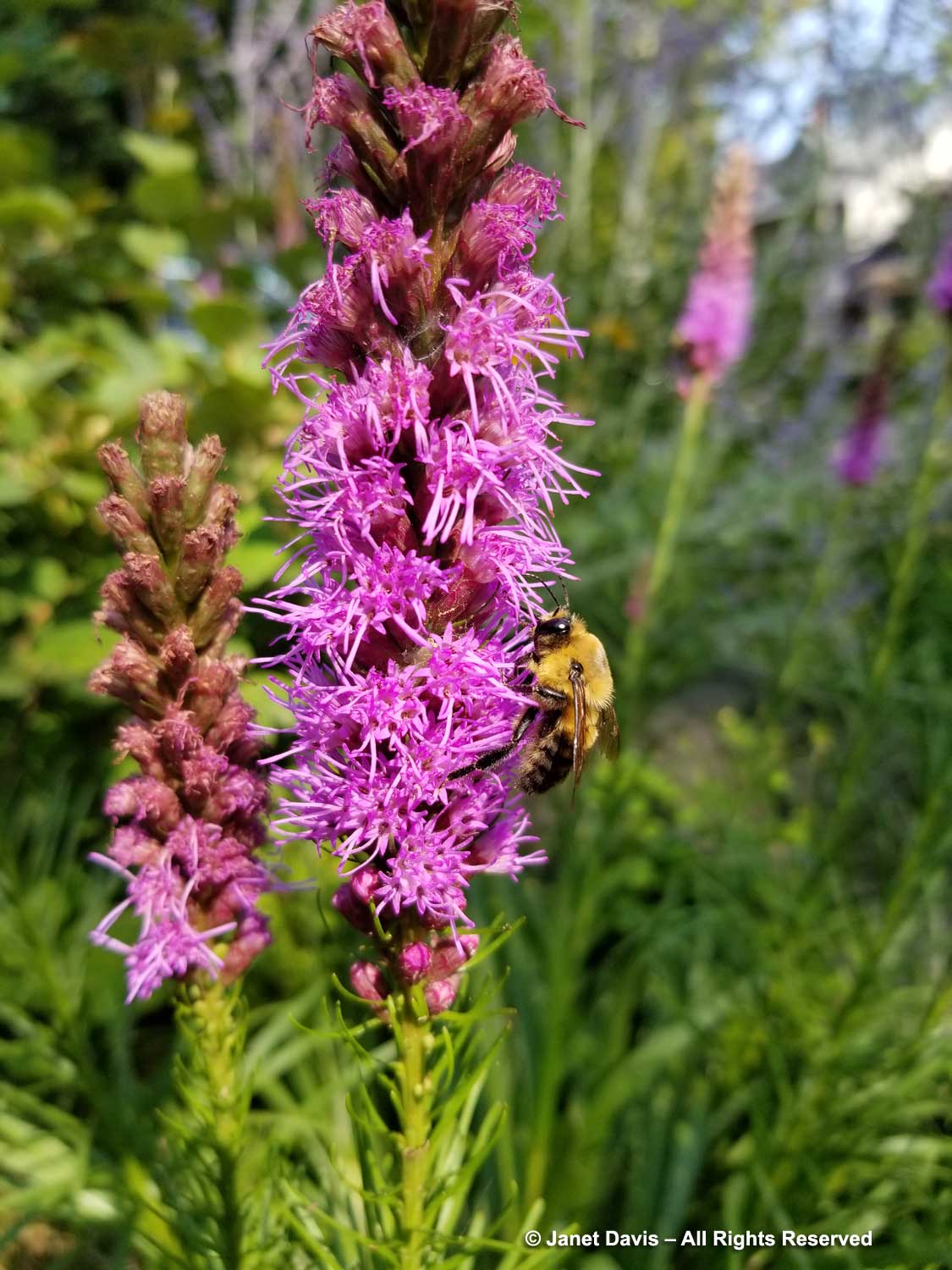
I adore the burnets and was able to source Sanguisorba officinalis ‘Pink Tanna’, which has interesting little “scrim” flowers. But I’m still on the lookout for the big, dark-red species which add such a zingy note to a meadow-style planting.
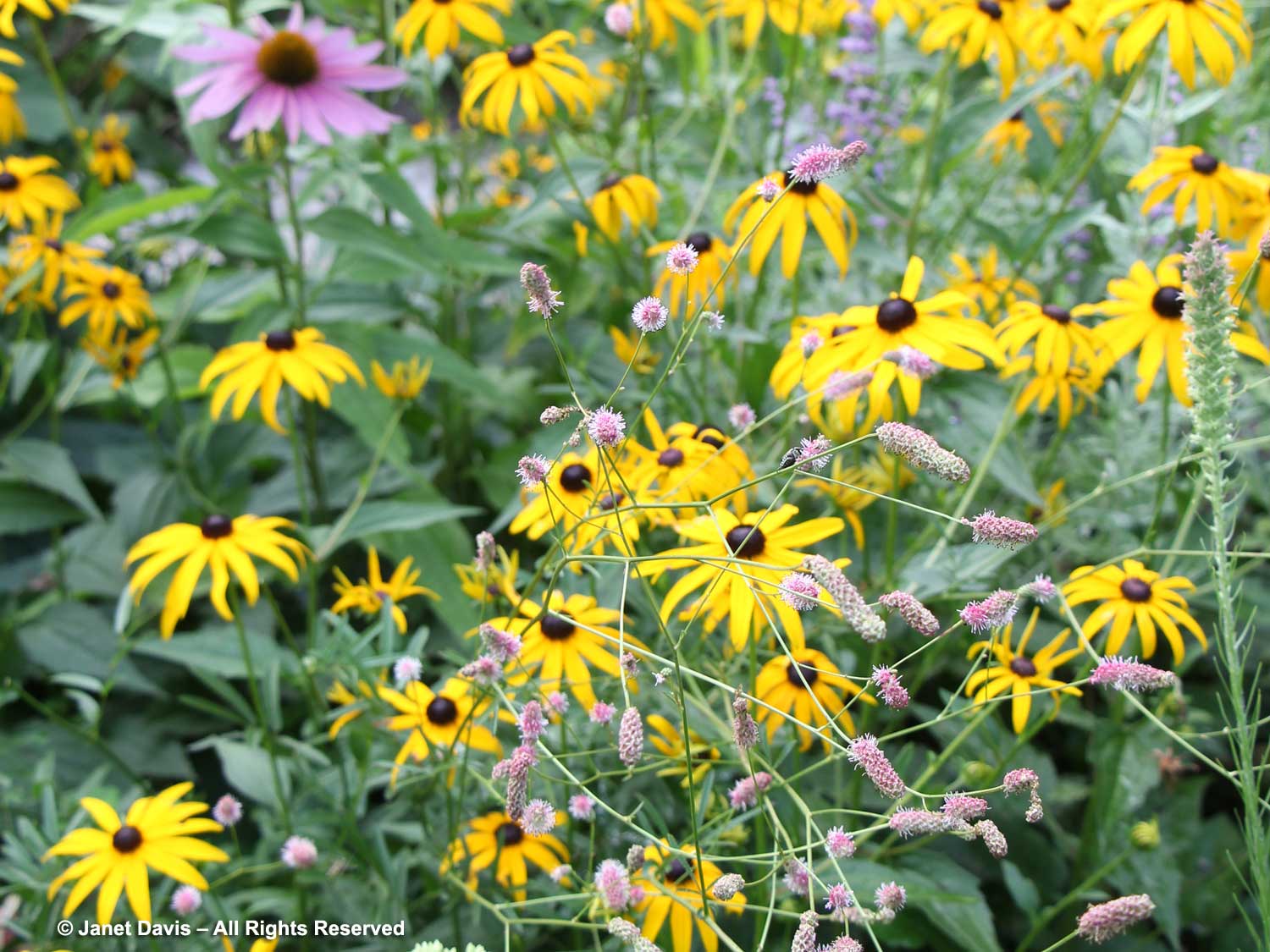
The Tiger Eyes sumac (Rhus typhina ‘Bailtiger’) is a favourite…..
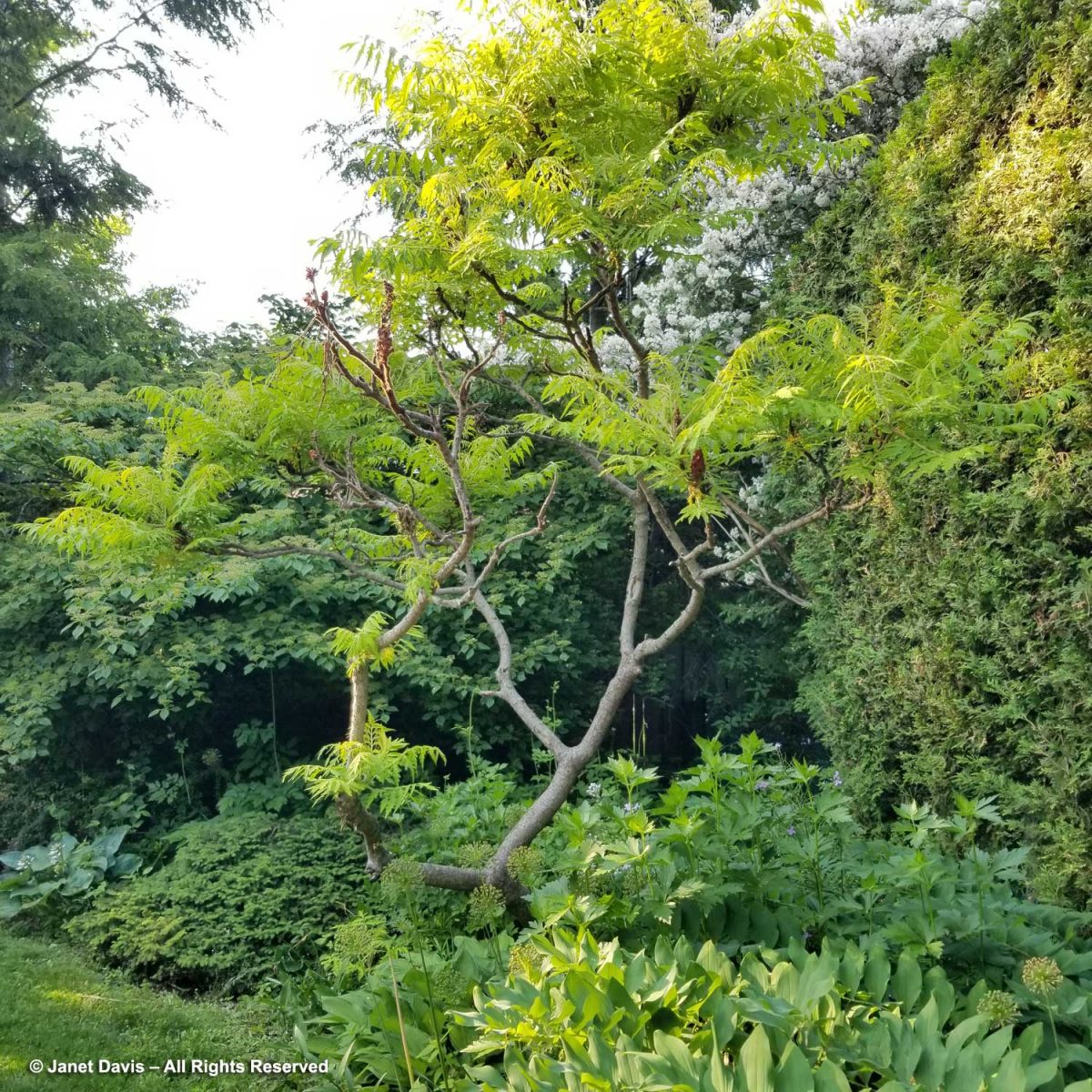
…… and it retains its chartreuse colour well into summer, before turning a beautiful apricot in fall.
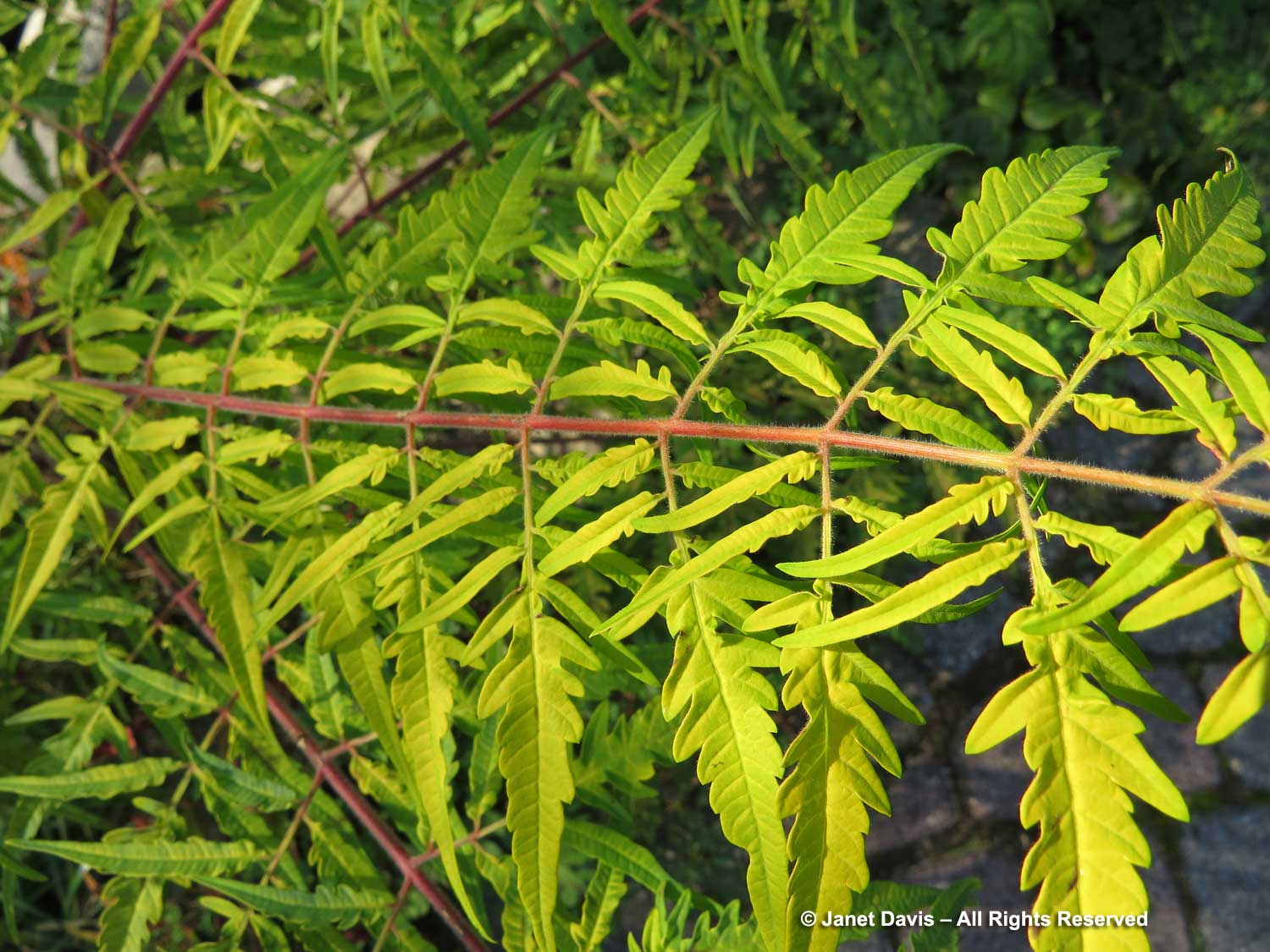
I forgive it its suckering-wandering ways because the birds absolutely adore it throughout winter.
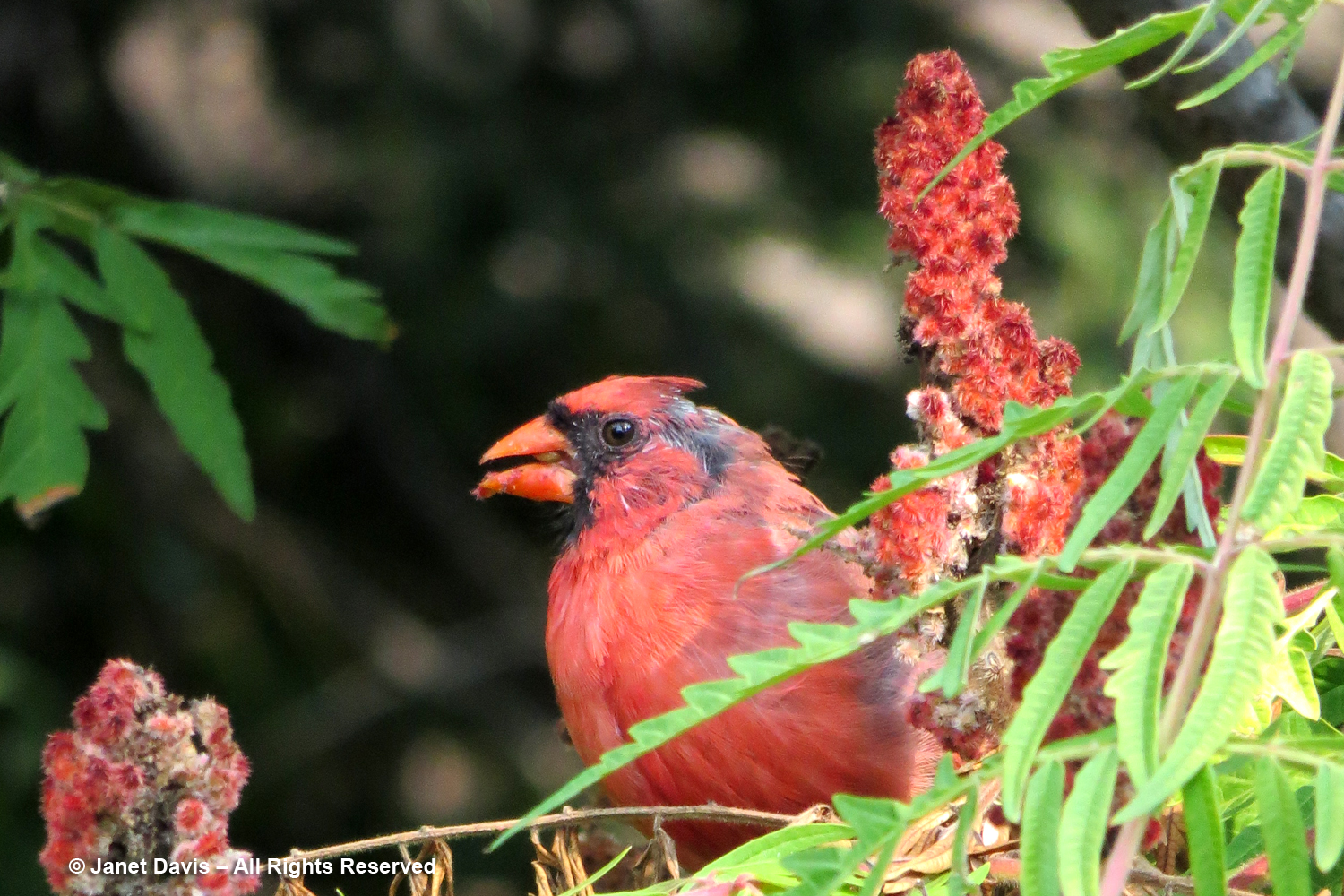
As for the Boston ivy, well it’s pretty much a given in my garden… on my gate, below, and on my fence, and it would climb the house if I let it, but I don’t.
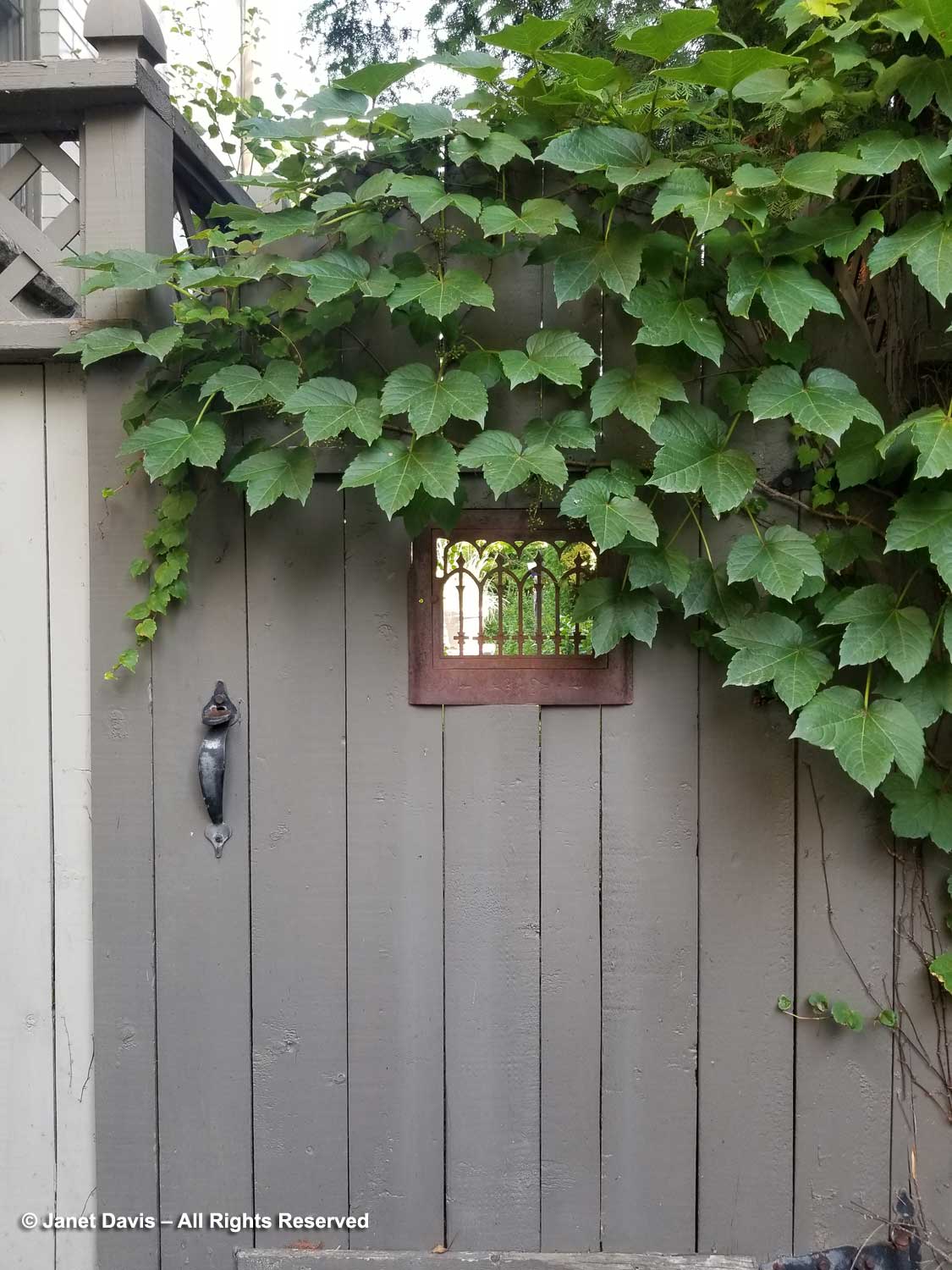
The little red petunias (P. exserta) were a seed-starting project a few years back and are quite rare and not found in garden centres. I wrote about them extensively in my 2020 blog My Motley Pots. This one managed to thrive in a container of self-seeding oakleaf lettuce on my deck.
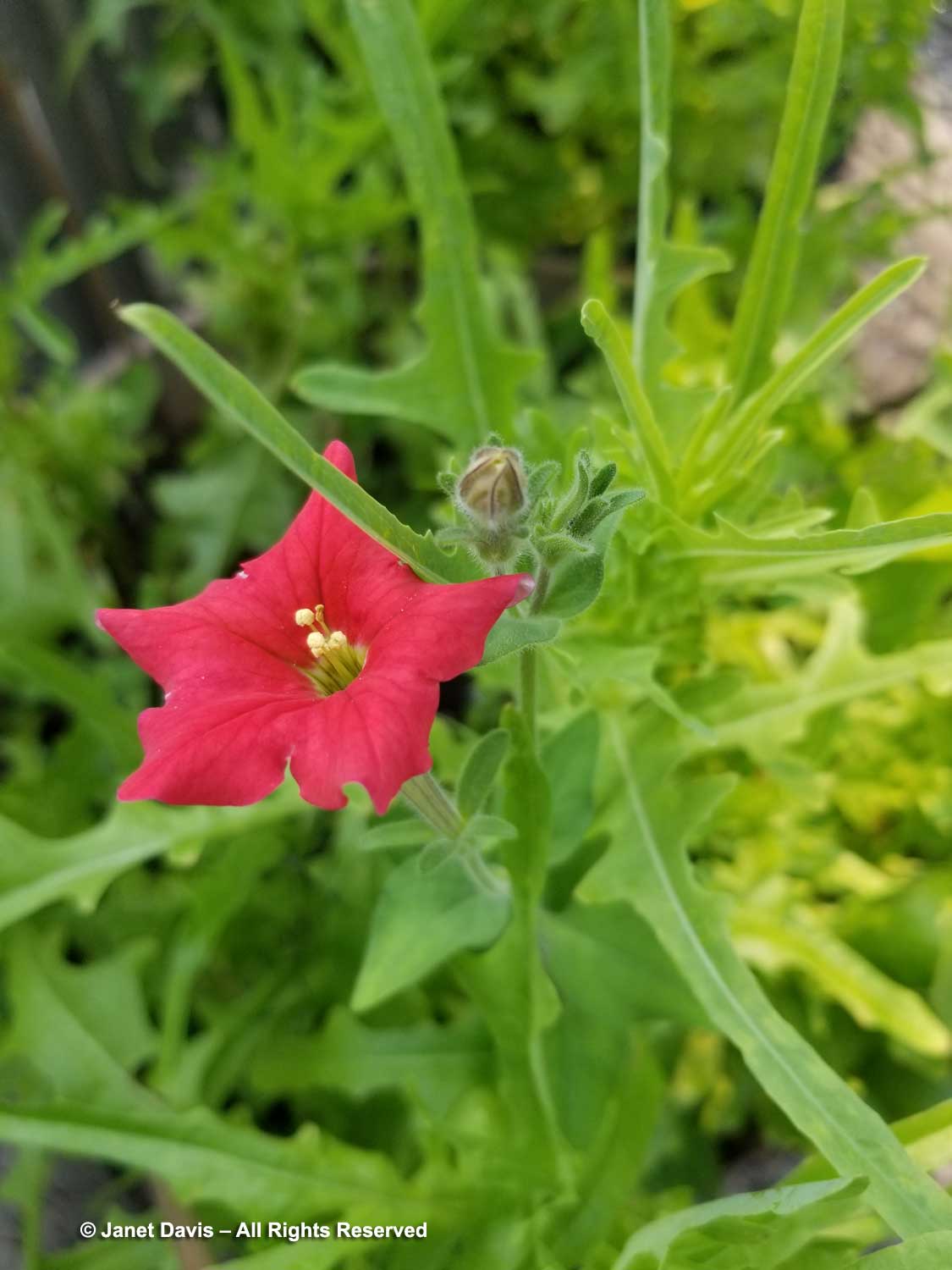
As I wrote back then, my youngest son’s girlfriend Marta Motti did a painting of this petunia being visited by the hummingbird which she gave to me as a gift. I am delighted to say that she is marrying Jon on September 10th in Tuscany – and we will be there for the ceremony!
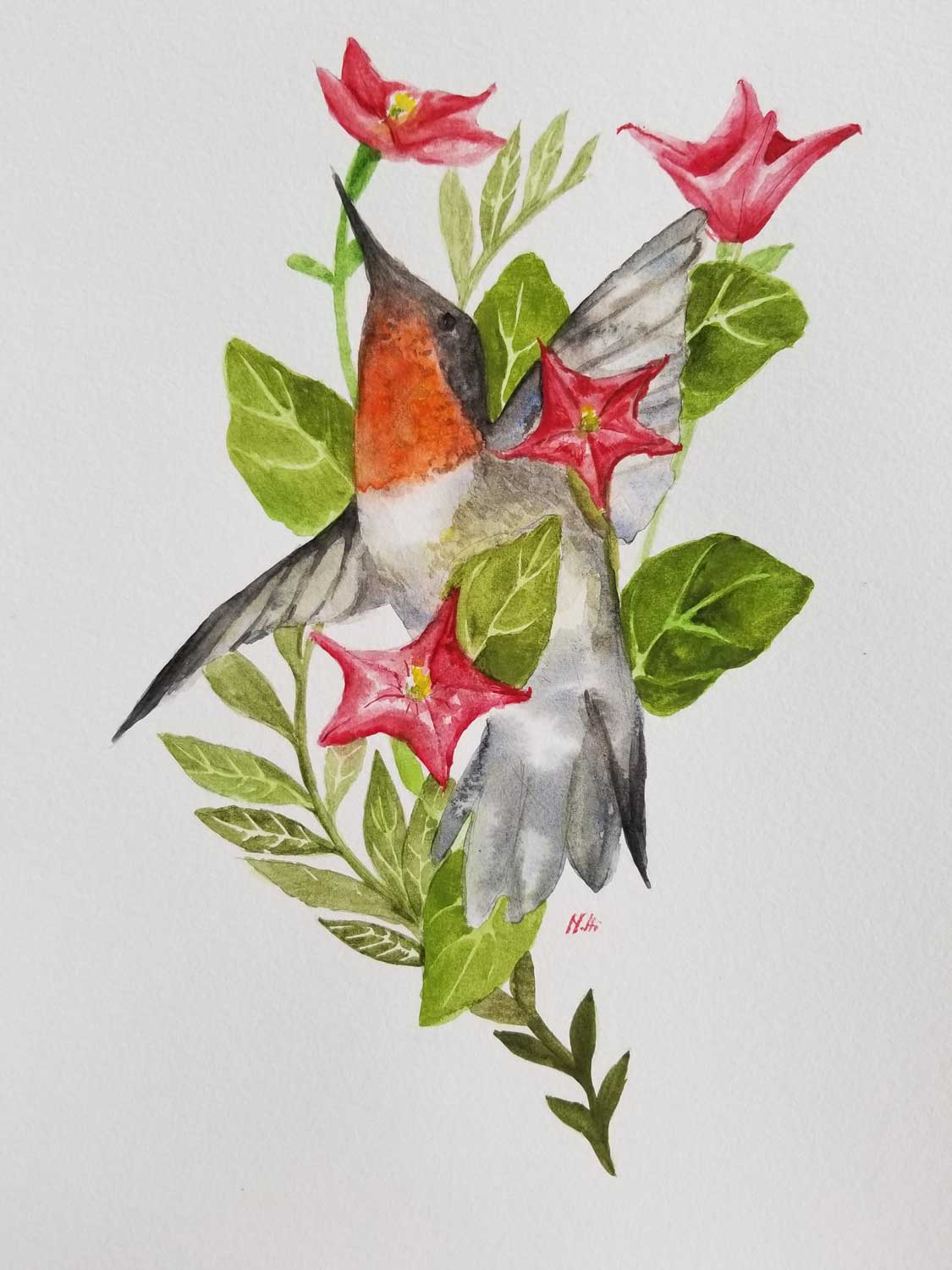
Sedum ‘Vera Jameson’ is in my backyard deck pots where it partners with the tough native grass sideoats grama (Bouteloua curtipendula). It’s very drought-resistant, given that these pots get watered very rarely, except by mother nature.
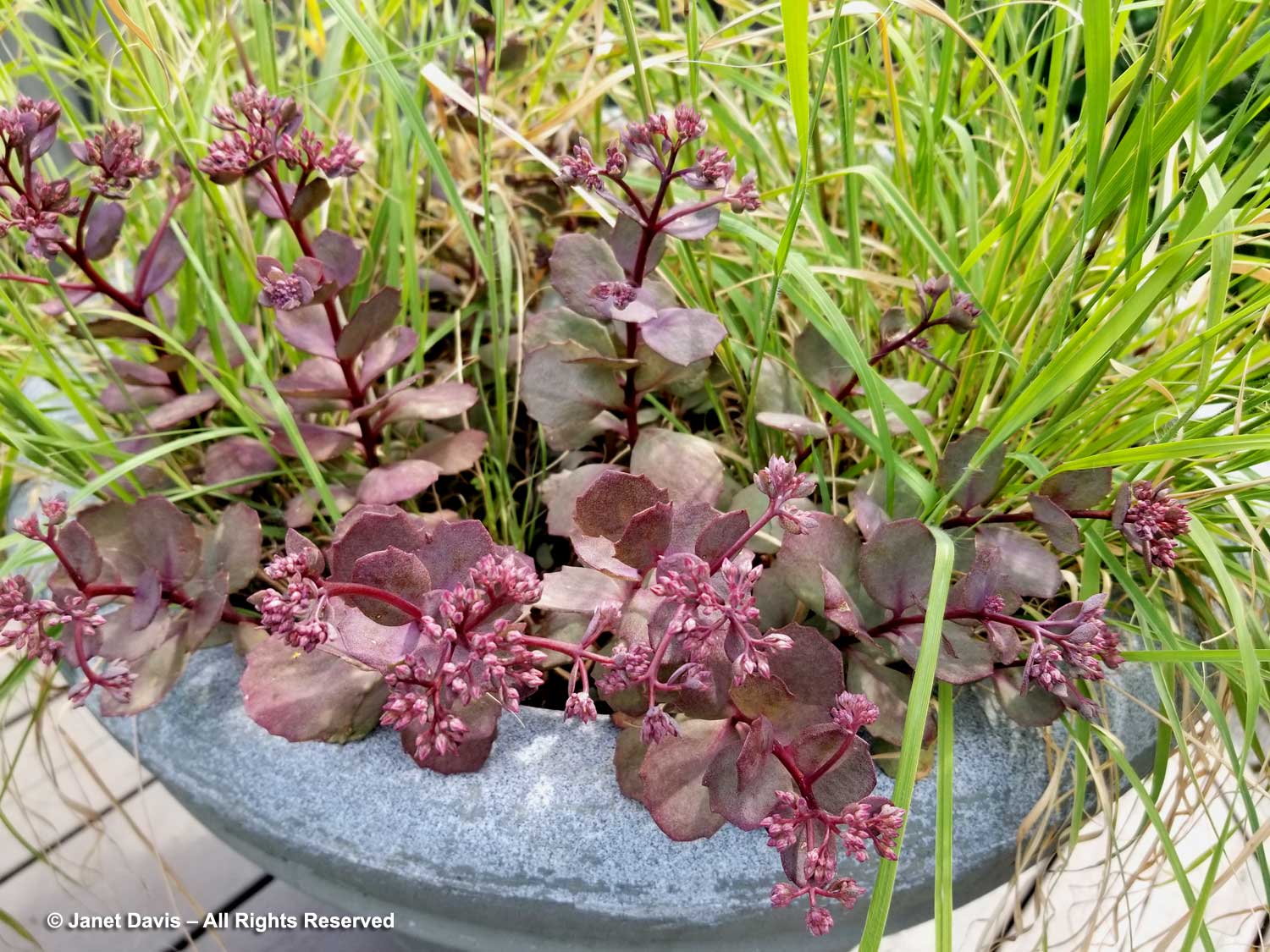
A few plants that are flowering now or in the next few weeks missed being in a fairy crown, so I’d like to say a few words about them now. The first is hoary or downy skullcap (Scutellaria incana), a native northeastern North America plant that I’m trialling in my front pollinator garden, where I’m hopeful it will be able to fend off the lily-of-the-valley groundcover.
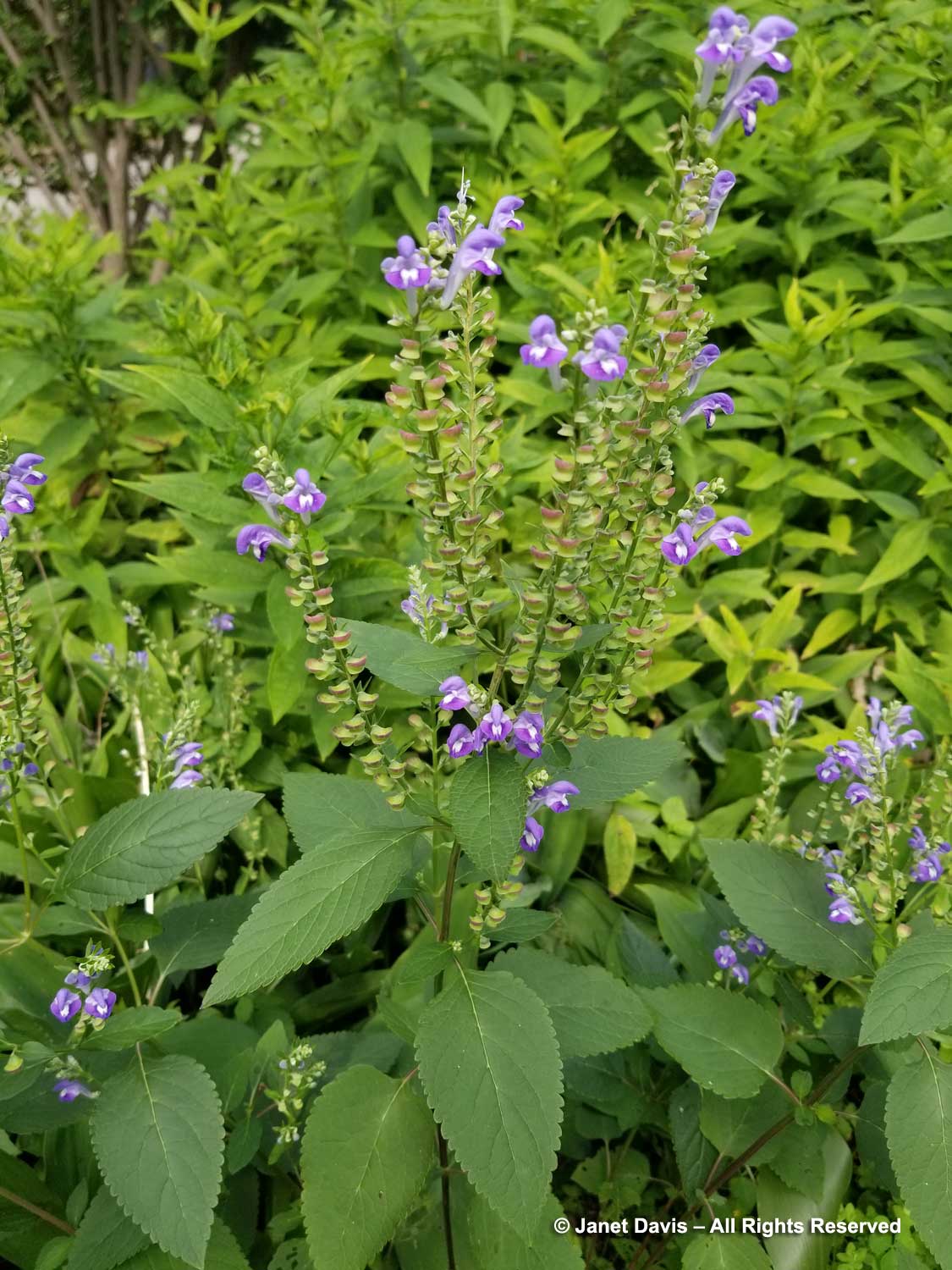
Lastly, I’d like to give a nod to my favourite blazing star or gayfeather, Liatris aspera, aka rough blazing star. Though endangered, this is our regional native. Drought tolerant, it reaches 90-120 cm (3-4 feet) in height; it will start to flower in the next few weeks and is a superb, late-summer pollinator plant.
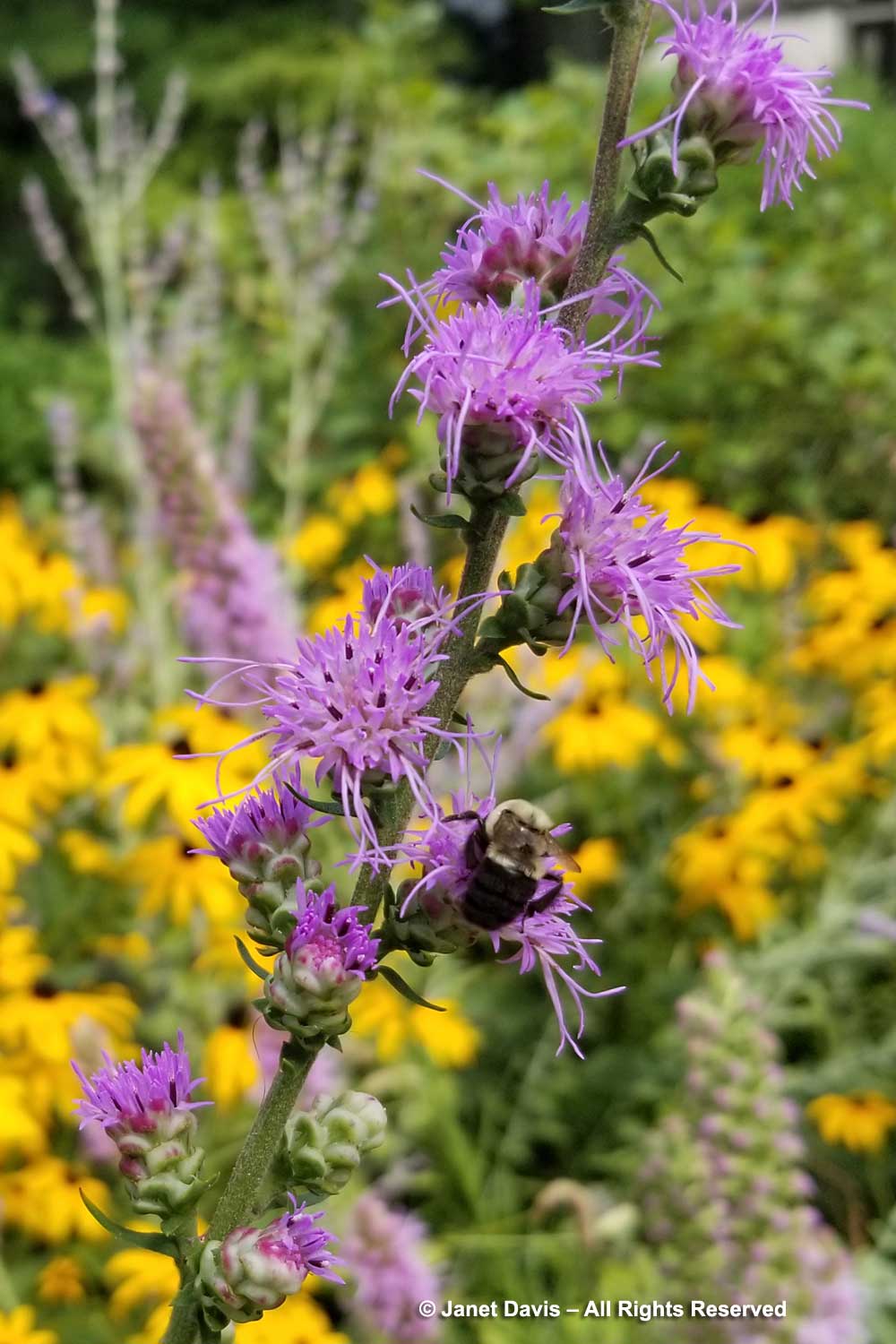
As for the Canada goldenrod….. well, it’s a useful weed but if you turn your back you’ll have a forest. So don’t turn your back!

